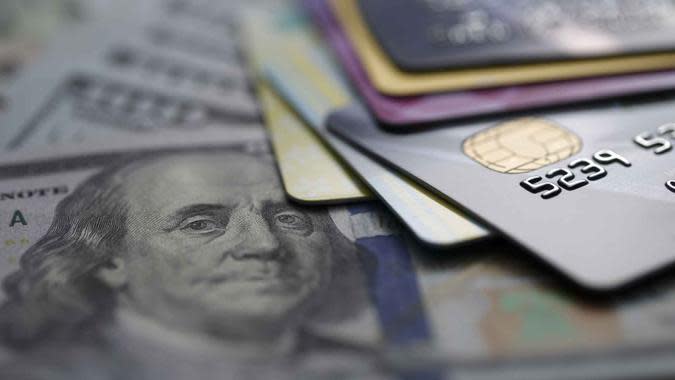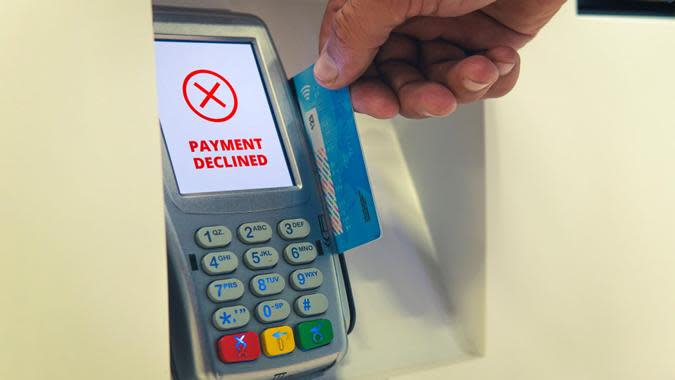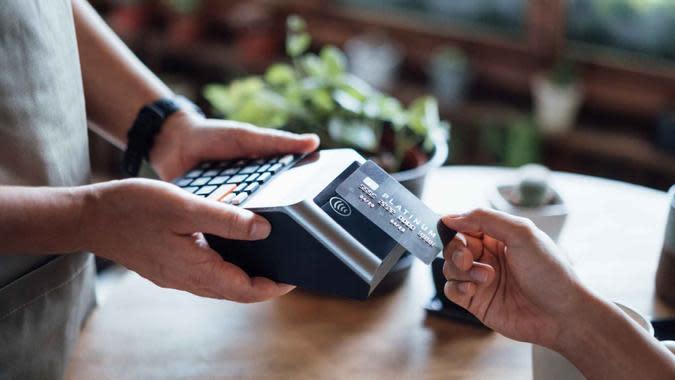7 Red Flags To Watch Out for When Picking a Credit Card

According to the most recent data shared by the Federal Reserve Bank of New York, Americans’ credit card debt has reached a whopping $1.12 trillion.
Read Next: What Is the Average Credit Score for the Middle Class and Upper Middle Class?
Find Out: $10K or More in Debt? See If You Could Become Debt-Free (for Less Than You Owe)
This astounding figure indicates that consumers are struggling to keep up with their bills as inflation continues to impact savings. It also means you’ll want to find the ideal credit card to use as a financial tool instead of letting it bring you into debt.
Certain warning signs exist if you’re looking for a new credit card but aren’t sure which one to choose. You want to be able to spot these in advance so that you don’t sign up for the wrong card.
What are the seven red flags to watch out for when choosing a new credit card to apply for?

Shockingly High Interest Rates
The first red flag you should look out for should be the interest rate. A high rate will make it difficult to get out of debt if you ever fall behind on your bills.
“When evaluating credit cards, it’s crucial to compare the Annual Percentage Rate (APR), which reflects the cost of borrowing on a yearly basis,” said Kristy Kim, the CEO and founder of TomoCredit.
“Cards with high APRs can become extremely expensive if you do not pay off your balance in full each month. High interest rates are especially concerning if the card issuer imposes a penalty APR, which can increase your interest rate even further if you miss a payment.”
While the goal is to pay off your balance, things can happen, and you want to ensure the interest rate is manageable.
Kim elaborated, “Always aim to choose a card with a competitive, lower interest rate to minimize these potential costs and avoid falling into a cycle of debt.”
For You: How Can You Withdraw Money From a Bank Account? 3 Ways To Know
Learn More: How Much Does the Average Middle-Class Person Have in Savings?

Conditional or Introductory Offers
As tempting as it can be to sign up for a “zero rate” card or enticing cash-back offer, you want to find out if the offer has any conditions.
“Credit card issuers often use enticing introductory offers to attract new customers,” warned Kim. “While these offers can be beneficial, they frequently come with specific conditions or limitations that you need to understand fully.”
You want to be skeptical of rewards that expire quickly or have multiple conditions.
Be Aware: This Is the One Type of Debt That ‘Terrifies’ Dave Ramsey

Complex Rewards Programs
Kim also suggested consumers be cautious of reward programs that are overly complex or have restrictive redemption options.
“Such programs might have intricate earning structures, requiring you to keep track of varying rates for different categories or reach certain spending thresholds to maximize rewards.”
These rotating categories that change often can also add confusion. To make matters worse, the limited redemption options can ruin the value of the rewards system. Finally, you want to watch out for rewards that simply expire after a certain period of time.
“Simple and flexible rewards programs generally provide better value,” she added.

Hidden Fees
Before signing up for a credit card, it makes sense to read over the fine print because some details could prove costly later on. While it’s no secret that all credit cards charge some sort of fee, you want to be aware of what you’ll be paying for upfront.
Kim recommended, “Look out for hidden fees such as annual fees, balance transfer fees, foreign transaction fees and late payment fees that can add up quickly.”
If the credit card does charge an annual fee, you’ll want to inspect it to see if it makes sense. While some credit cards have perks like airport lounge access or additional insurance, these features may not be worth the cost if you don’t travel often.
Spending $150 on an annual fee for a credit card with irrelevant perks isn’t worth the hassle.

Low Credit Limit
A low credit limit can be a red flag because this could hurt your credit utilization ratio since it can be easy to use up your available credit, which would hurt your credit score and cost you over time.
For example, if you have a $1,000 credit limit, a purchase of $700 could bring your credit utilization ratio up to 70% since you’ve used 70% of the available credit you can access. According to Experian data, those with an exceptional credit score of above 800 tend to have a credit utilization ratio of 6.5%.
Trending Now: You Can Get These 3 Debts Canceled Forever

High Credit Limit
The opposite problem is gaining access to a high credit limit you’re unprepared for. If your spending habits aren’t in check, that higher credit limit could lead to overspending and credit card debt.
The goal is to find a credit card with a comfortable credit limit so that you can manage your finances properly.

The Inability To Upgrade
When you’re looking for a secured credit card to rebuild or establish credit, you’ll want to find one that allows you to upgrade eventually.
Since a secured credit card comes with a mandatory refundable deposit as collateral, you’ll want to be certain that the account can upgrade to a regular unsecured credit card at some point to increase your credit limit.
The main concern is that if the secured credit card doesn’t allow you to eventually upgrade to a secured credit card, you may struggle to get back your refundable deposit without closing the account.
Closing credit card accounts can lead to a lower credit score which can have negative financial consequences for the foreseeable future. Since doing this isn’t the best move for your credit score, you should avoid this red flag if you can.
More From GOBankingRates
In Less Than a Year, You Might Not Be Able To Afford To Live in These 6 US Housing Markets
This is The Single Most Overlooked Tool for Becoming Debt-Free
This article originally appeared on GOBankingRates.com: 7 Red Flags To Watch Out for When Picking a Credit Card

 Yahoo Finance
Yahoo Finance 